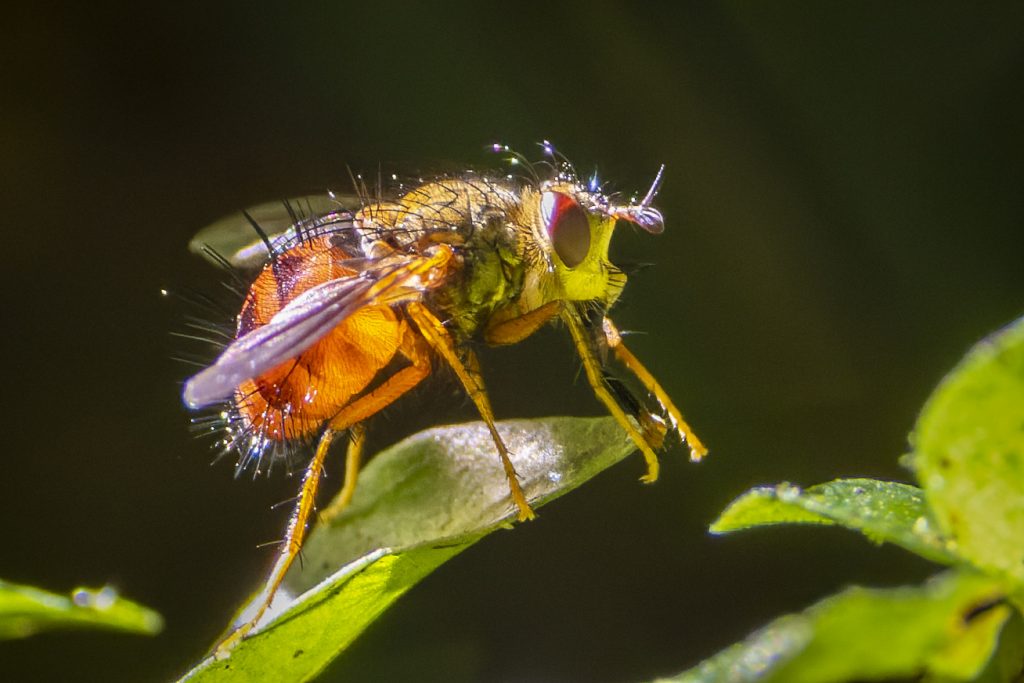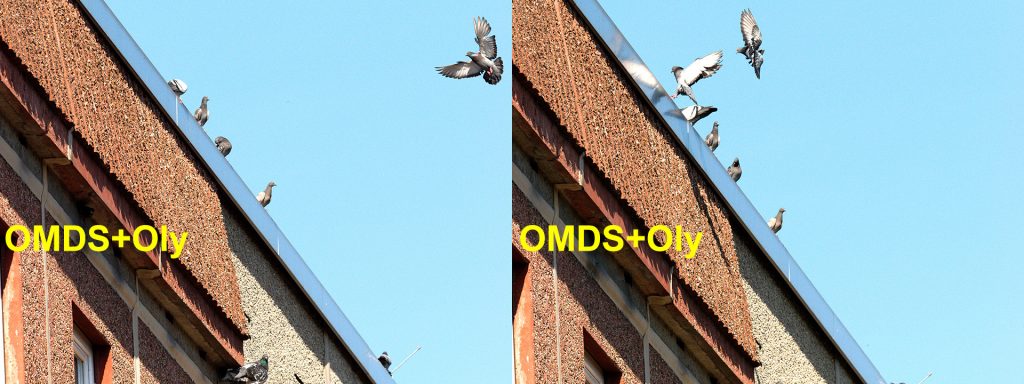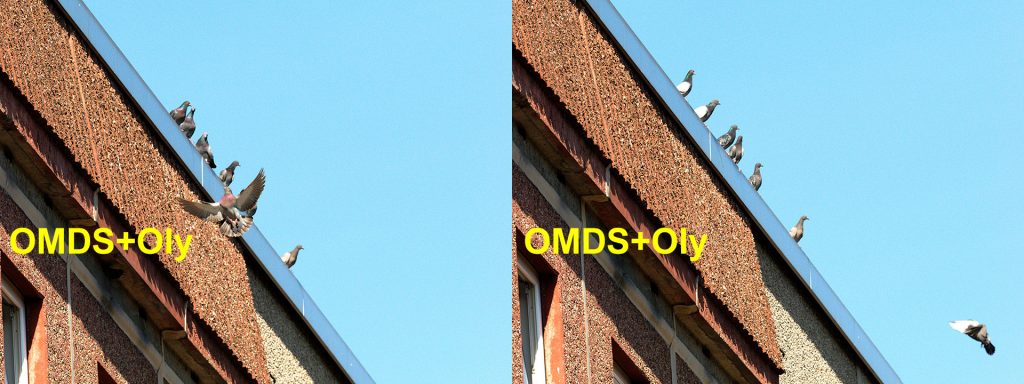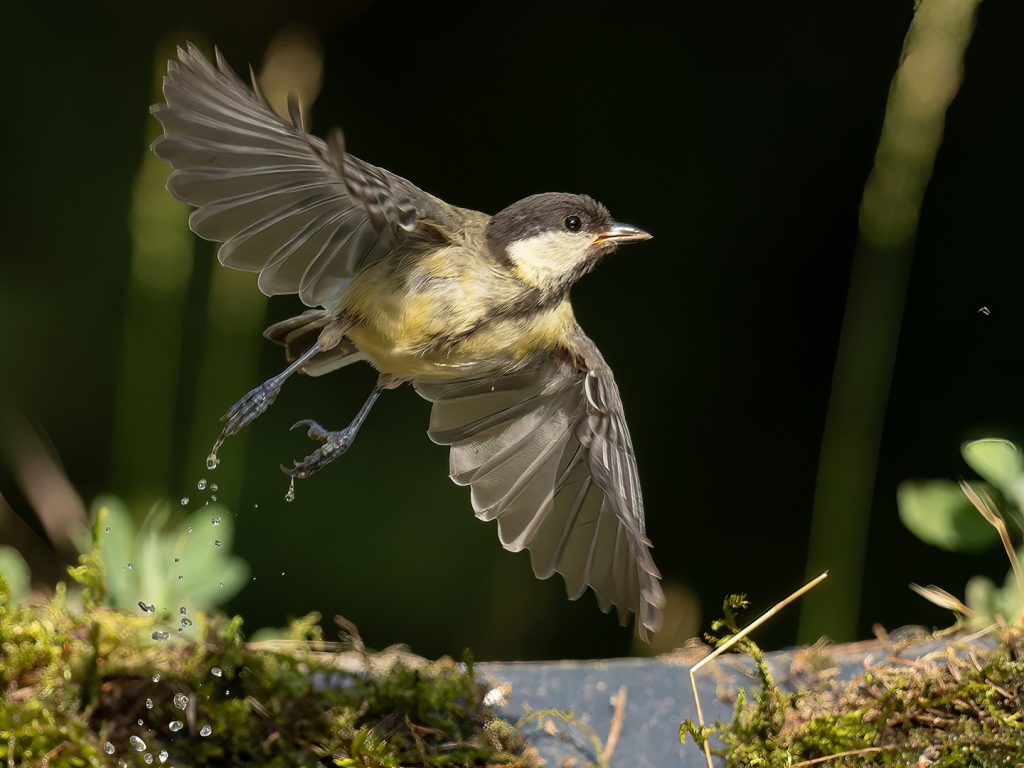Back to Part I: General thoughts, turn of events, bodies
Five body/lens combinations for mobile bird shooters: Part II
Lenses:
Nikon’s 500 PF needs no introduction. This lightweight lens has become a legend of its own. It handles well and is very sharp. Within Nikon’s current line-up, it will perform best on the large-and-heavy Z9. The Z7ii may be an inferior alternative, but then, it is much better matched to oppose the R5 and OM-1 price-wise, as well as when considering dimensions and weight.
Some of you may consider my round-up unfair, as the 500 PF, together with the Canon lens, features the shortest focal length in the test, which seemingly gives the MFT gear an edge. Should I have used a TC? Well, I used to own Nikon’s TC-14E III and found the results shooting with it to be almost exactly the same as with shots taken without the TC if the image was subsequently scaled up to the same higher 1.4x resolution. This makes the slower AF caused by the TC a price not worth paying. Because of this, I later got rid of the TC. I still have the Canon RF 1.4x extender and also own the Olympus 1.4x one but have found the same thing to be true with both of them: with the RF 100-500, for example, you can just as well leave the extender at home and carefully upscale your images in post. The results will be just as good, while the lens will focus faster.
Long story short, I decided to compare all lenses without TCs. Look at it this way: if you calculate how many pixels each of the five combos puts on the sensor when cropping to the same focal length equivalent of 800mm (full frame), the answers are 17.6 MP for the Canon, 17.85 for the Nikon, 11.5 for the OM1 with the Olympus 300, and of course 20.4, the OM-1’s native resolution, with the Big White (assuming the TC is disabled) and the PL lens. Quite comparable except for the 300mm, but even that one still yields enough pixels to print quite large. You can put TCs on all of them if you prefer, where the built-in one on the Big White will likely be optically better matched than the others, but the relative comparisons won’t look much different.
I usually shoot these lenses wide open unless the light is particularly good or I really need more Depth of Field (DoF). Most of the time, the light isn’t great and I want to keep ISOs from going through the ceiling, so I’ll keep the lens opened up all the way.
A word about image stabilization: while all three camera bodies feature good IBIS, with the OM-1 nominally being the best and the R5 right behind it, this does not mean all that much when it comes to bird shooting. For one, at focal lengths of 500mm or more, an in-lens stabilizer principally works better than any sensor stabilization could, so if anything, it is the lens’ stabilizer, not the body’s, that counts. In that area, the Nikon and Canon lenses feel slightly better than the Olys (300 and 150-400), while the PL is worst. In any case, ‘static’ bird shots usually require at least 1/250s or so with small birds, whereas BIF shooting rarely works well below 1/2000s and often requires 1/4000s. Don’t get me wrong: IBIS/IS is great when it comes to finding the bird in the viewfinder, and the Canon in particular shines in this department (yes, I know that Olympus specs the most steps of combined IBIS/IS, but at least in the viewfinder, Canon looks more stable): its combined body and lens stabilization strike me as doing the best job in this comparison. On the other hand, at 800mm, a 5.5-stop IS, which is the minimum level all of these combos promise, means you could shoot with shutter speeds of 1/15s or so with all of them. Not very helpful with birds. Stabilization helps little or none if it is not your hand that moves but your subject. Well, at least until someone invents “target stabilization” that will make the bird stay put. 😉
As far as minimum focusing distances go, the Canon, Oly and PL lenses are all fine, with MFDs between 0.9m/3ft and 1.4m/4.6ft, while the almost 3m/10ft of the 500 PF means a disadvantage for that lens. More than once, I was wondering why the Z7ii wouldn’t focus until I remembered that I was trying to shoot something at a distance where the others worked fine but the 500 PF just couldn’t do the job. In contrast, the Canon and MFT rigs offer almost macro potential:

Bokeh and depth-of-field (DoF) are both aspects that matter for bird shooting. The ability to separate the bird from its background can make the difference between a good and a great shot, and a nice-looking bokeh is the icing on the cake. However, none of these are super-fast lenses. At f/5.6, the Nikon promises the best bokeh, but let’s be honest here: if you want the best, none of these lenses will suffice. If you want decent bokeh, none of them will disappoint. Even the PL 100-400 delivers decent enough bokeh, as the house sparrow example shots in the next section illustrate. As experienced bird shooters know, getting enough of the bird sharp can be quite a challenge. There are shots where you may only want the eye and part of the head sharp, which puts the MFT lenses with their deeper DoF at a disadvantage, but more often than not, it is the opposite: the fact that with respect to DoF, the Oly performs like an f/8 and the PL like an f/13 lens is a boon in many bird shooting situations, as it gives you a greater chance to keep most or all of the animal reasonably sharp while usually still offering enough background separation.
A side note for those curious about this: why did I pick the PL 100-400 and not the Olympus lens with the same FL range? The answer is weight. With tripod feet mounted, the Oly is a whopping 340 grams heavier. Reports comparing the two paint a fuzzy picture: some people swear the Oly is much better, while others praise the PL as being very sharp.
AF impressions
Comparing the AF performance of different setups is like walking into a minefield, as it almost inevitably triggers all kinds of disagreement and might even attract some flame-throwing. There are so many factors to consider: camera setup (things like AF sensitivity, focus modes, AF areas, and, and, and), the shooter’s skill, the size of the bird, the speed of the bird, and so much more, that many of you will be inclined to disagree with my thoughts because your experience differs from mine. When it comes to comparative testing, many folks claim to have the right method and aim to give you “the answer”. I feel unable to do that. I rarely shoot large birds, and the smaller ones I frequently shoot tend to be, well, smaller, plus they usually fly in much less predictable patterns. As a result, the percentage of sharp shots I’ll get tends to be more erratic than that of experts who focus on, say, eagles or kites in flight and then give you an exact percentage of keepers they got. Sometimes I get a lot of sharp shots, sometimes only some, and sometimes none at all. This is usually as much my fault as it is the camera’s – or the bird’s. 😉 Adding to the challenge, my level of familiarity with each body for BIF shooting is different, the R5 having received most use over the last year or two.
So please, take everything I am going to say in this section with a grain of salt. One of my favorite birds, a species I shot extensively while testing these combos, is the house sparrow, a fast and erratic flyer that is a pain to keep in focus. I’ll give you my impressions from shooting plenty of these fellers with each body/lens combination. I also shot many types of birds in flight, from small to large. The latter added up to far more than ten thousand shots within a week or two, but it would make little sense for me to try to give you accurate percentages of ‘sharp’ images or anything else pretending to be objective ‘hard’ data. Luckily, I was able to deepen my experience with the Canon and OMDS/Olympus/Panasonic Leica combos (though not with the Big White) during a week of bird shooting from various bird hides in Hungary. Will refer to that here and there. The Nikon gear stayed at home during that week.
FYI, my usual AF settings are as follows: Continuous AF, bird/eye detection, wide/large or narrow/small AF Area (depends on bird movement and background; sometimes set to single/spot if a bird sits still enough), AF sensitivity between normal and slow (depends on bird movement and background).
I first tested AF speeds several times with each combo, going from infinity to MFD and back in good light. The clear winner was the Canon, followed by OM-1 with Oly 150-400, then Oly 300, then with the PL lens. All of these showed very good to excellent performance. The Nikon combo was much slower, needing at least twice as much time compared to the Canon. This mainly reflects Nikon’s struggle with implementing fast AF in the Z series, as I remember the 500 PF lens focusing considerably faster back when I paired it with a D500 or D850. Next, I tested AF speeds going back and forth between a dimly lit near target and a brighter one at infinity. This time, the Canon slowed some but still performed well. The Big White and the Oly 300 weren’t far behind, whereas the OM-1 with the PL 100-400 hunted more and thus often needed significantly more time. The Nikon was again the slowest, now by an even wider margin.
Generally, the AF area size selection seemed to have a bigger impact on how slow or fast the system focused with the OM-1 than with the R5, where I rarely felt that choosing the “wrong” AF area slowed the focus, though it naturally did cause the camera focusing on the wrong subject in some situations.
R5 and OM-1 show you in the EVF exactly where it is they are focusing, and both do a good job staying focused on the bird. Unless that bird is overly small, the eye focus works well with both. Just about perfect with the R5, still excellent with the OM-1. With the Nikon, it depends: Eye AF is not optimized for birds, and usually does nothing with smaller ones. Depending on AF area settings, you can often find yourself with not so much as a clue where the body currently focuses as it sometimes gives no visual feedback whatsoever as to where the focus currently lies. As far as twigs and other distractors go, the OM-1’s focus seemed rather sensitive. Even a small one often confused the focus unless I switched to manual. This depends somewhat on the AF area mode I chose but seemed to exist with all of them. [UPDATE: This improved considerably with firmware version 1.2.] It was less of an issue with the Canon, whose focus often seemed glued to the the bird no matter what was between it and the lens. The Nikon also did better here, though it showed some inconsistencies. To give you an idea of how small a twig I am talking about, here are two examples where the twig is in focus (Nikon and OM-1+Oly 300), and one where the bird is (Canon):

The flip side of this is that when trying to pre-focus on a small twig, the OM-1 did a better job than the R5 did, which instead decided to focus on the background more often than I liked.
Even with the latest firmware, which received some improvements, the Nikon’s AF is solid in most situations but unfortunately not all of them. It struggled sooner in low light than either of the other two, sometimes hunting eternally where the other two bodies quickly acquired focus. It also performed considerably worse than the others when tracking fast-moving objects, such as small birds in flight. The R5 is excellent, the OM-1 at least very good, the Z7ii, well, ok. When choosing the right mode, the R5’s and OM-1’s ability to stay focused on the bird is fairly impressive, though as already discussed, neither is flawless. On the Z7ii, you’ll need to keep the bird inside the box (Wide–S or –L), but even then, the Nikon too often seems to get interested in something other than the bird. Don’t get me wrong: the Nikon CAN be used for bird shooting and will produce excellent shots once the subject is in focus. Getting it there requires much more training and understanding of which AF mode to use in which shooting situations than on either of the other two, so the Canon and OMDS make it far easier to produce good results. Nikon still has homework to do here. As the Z9 demonstrates, they sure figured out how to do it, so hold your breath for a Z7iii if Nikon is your brand.
When it came to AF tracking, each of the bodies did fine when shooting birds against a blue sky, even if the bird was quite small in the frame. Over extended series of shots, the OM-1 did not miss even one of them. Look at these two shots from a long series, where I had originally focused on the perched pigeons: from the first bird entering the frame at the upper right to the final landing, every single shot was right on.

Another bird flying in from below, now against the more cluttered backdrop of wall and roof border, quickly received focus, with the OM-1 also keeping it sharp all the way. I had stopped the aperture down to f/6.3 here, but still: excellent performance. [Image on the left; the bird was focused properly also while it was still farther away.] However, another bird, this time flying in from the lower right, did not receive the same courtesy and remained non-sharp throughout its flight, even when getting closer to the others. [Image on the right.] Not sure what was different here.

In longer bursts with continuous AF, I found the R5 to more consistently nail the focus than the OM. With busy backgrounds, the OM-1 would ever so often miss focus for a shot or two in a series, usually reacquiring it by the next one. This happened with the Oly and, far more frequently, with the PL. Not a big issue, and the overall performance still impressed me, but the Canon proves that there is still room for improvement. Make no mistake: even the Canon struggles, and occasionally all but gives up, when the background is overly busy.
As far as the OM-1’s focusing ability in dim light goes, it had its share of misfocused shots (usually slightly off), but I was quite impressed: while the Canon is a strong performer in this area, the OM-1 almost gave it a run for the money.
I cannot let the one feature go unmentioned that sets the OM-1 apart big time from its competition: Pro Capture (ProCap). For those unfamiliar with it, which probably includes most Nikanony shooters, this mode serves to capture events that “just happened”: while you half-press the shutter button, the body keeps taking pictures and buffers them in internal memory. Older images simply get over-written, while a camera setting allows you to choose how many to keep. When you finally fully press the shutter button, up to 70 images taken immediately before are written to the card, followed by those captured after your full shutter press. This mode makes getting previously fiendishly difficult shots easy. Imagine a perched bird getting ready to take off. You want to get a few shots of it as it is lifting up into the air. With a ‘normal’ body, all you can do is wait and hope you’ll hit the right moment, while knowing that this is nearly impossible to time right. Even if your reaction time is great, the delay it causes plus the shutter lag add up to a total delay of maybe 0.5 – 1 seconds. Most times I tried this, the bird had already left, or mostly left, the frame, and the shot was unusable. Yes, people do get such shots with pretty much any body (I did, too), but luck plays as much of a role in those as skill does. With ProCap, getting such a shot is almost a cakewalk. You still need to know what you’re doing, but with a steady hand, success is almost guaranteed as long as you are patient enough to wait for the bird to take off. For birders, this is a HUGE advantage of the OM-1. This is easier with a bird approaching its nest, where you can time your shots much better and get the shot without ProCap.
To illustrate the point, here are a few shots from an early BIF series. They show a house sparrow taking off. Note that the last two are slightly un-sharp because I did not focus correctly, so it is not the body that is at fault here. These aren’t great shots, but they also took little effort to capture. After all, I wasn’t more than superficially familiar with the camera at the time, if even that. Not impossible to get with the other combos, but waaaaay harder. The shot below it, of a Great Tit, in my view is impossible to get without the feature. I’ve now taken many ProCap shots and am still “wowed”.


Speaking of OM-1 features, there is another one that can be useful for bird shooting: this body allows you to set a focus distance limiter (min & max!) in the menu so as to keep the camera from hunting in just about any distance range. Not something I use a lot with my style of ‘mobile shooting’, but a smart idea for whenever you know where birds will show up. This OM-1 feature, ProCap and a few others (that mostly matter when shooting other subjects) make me wonder why none of the bigger brands offer something similar. (Canon’s new R7 APS-C body features a ProCap clone, but its implementation is rather awkward. Nikon’s Z9 has a “Pre-release capture” mode that on paper looks like the same thing, but it works only in that body’s 120 fps shooting mode, where all it is able to produce is what I consider “crippled JPEGs”. Not something I can take seriously.)
Part III: Test shots Part IV: Sample shots, my personal conclusions